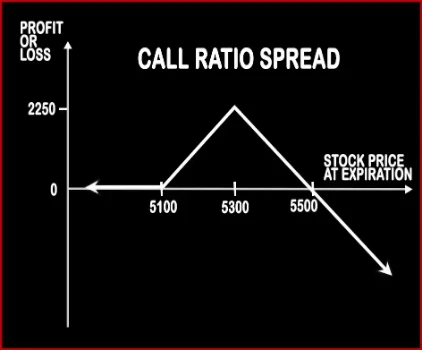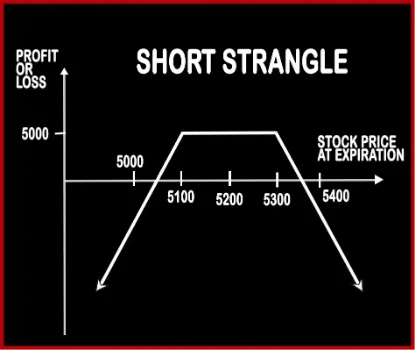Compare Strategies
| RATIO CALL SPREAD | SHORT STRANGLE | |
|---|---|---|

|

|
|
| About Strategy |
Ratio Call Spread Option StrategyAs the name suggests, a ratio of 2:1 is followed i.e. buy 1 ITM Call and simultaneously sell OTM Calls double the number of ITM Calls (In this case 2). This strategy is used by trader who is neutral on the market and bearish on the volatility in the near future. Here profits will be capped up to the premium amount and risk will be potentially unlimited since he is |
Short Strangle Option StrategyThis strategy is similar to Short Straddle; the only difference is of the strike prices at which the positions are built. Short Strangle involves selling of one OTM Call Option and selling of one OTM Put Option, of the same expiry date and same underlying asset. Here the probability of making profits is more as there is a spread between the two strike prices, and if .. |
RATIO CALL SPREAD Vs SHORT STRANGLE - Details
| RATIO CALL SPREAD | SHORT STRANGLE | |
|---|---|---|
| Market View | Neutral | Neutral |
| Type (CE/PE) | CE (Call Option) | CE (Call Option) + PE (Put Option) |
| Number Of Positions | 3 | 2 |
| Strategy Level | Beginners | Advance |
| Reward Profile | Limited | Limited |
| Risk Profile | Unlimited | Unlimited |
| Breakeven Point | Upper Breakeven Point = Strike Price of Short Calls + (Points of Maximum Profit / Number of Uncovered Calls), Lower Breakeven Point = Strike Price of Long Call +/- Net Premium Paid or Received | Lower Break-even = Strike Price of Put - Net Premium, Upper Break-even = Strike Price of Call+ Net Premium |
RATIO CALL SPREAD Vs SHORT STRANGLE - When & How to use ?
| RATIO CALL SPREAD | SHORT STRANGLE | |
|---|---|---|
| Market View | Neutral | Neutral |
| When to use? | This strategy is used by trader who is neutral on the market and bearish on the volatility in the near future. Here profits will be capped up to the premium amount and risk will be potentially unlimited since he is selling two calls. | This strategy is perfect in a neutral market scenario when the underlying is expected to be less volatile. |
| Action | Buy 1 ITM Call, Sell 2 OTM Calls | Sell OTM Call, Sell OTM Put |
| Breakeven Point | Upper Breakeven Point = Strike Price of Short Calls + (Points of Maximum Profit / Number of Uncovered Calls), Lower Breakeven Point = Strike Price of Long Call +/- Net Premium Paid or Received | Lower Break-even = Strike Price of Put - Net Premium, Upper Break-even = Strike Price of Call+ Net Premium |
RATIO CALL SPREAD Vs SHORT STRANGLE - Risk & Reward
| RATIO CALL SPREAD | SHORT STRANGLE | |
|---|---|---|
| Maximum Profit Scenario | Strike Price of Short Call - Strike Price of Long Call + Net Premium Received - Commissions Paid | Maximum Profit = Net Premium Received |
| Maximum Loss Scenario | Price of Underlying - Strike Price of Short Calls - Max Profit + Commissions Paid | Loss = Price of Underlying - Strike Price of Short Call - Net Premium Received |
| Risk | Unlimited | Unlimited |
| Reward | Limited | Limited |
RATIO CALL SPREAD Vs SHORT STRANGLE - Strategy Pros & Cons
| RATIO CALL SPREAD | SHORT STRANGLE | |
|---|---|---|
| Similar Strategies | Variable Ratio Write | Short Straddle, Long Strangle |
| Disadvantage | • Unlimited potential loss. • Complex strategy with limited profit. | • Unlimited loss is associated with this strategy, not recommended for beginners. • Limited reward amount. |
| Advantages | • Downside risk is almost zero. • Investors can book profit from share prices moving within given limits. • Trader can maximise profit when the share closes at the upper breakeven point. | • Higher chance of profitability due to selling of OTM options. • Advantage from double time decay and a contraction in volatility. • Traders can book profit when underlying asset stays within a tight trading range. |